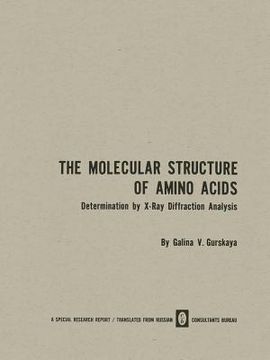Share
The Molecular Structure of Amino Acids: Determination by X-Ray Diffraction Analysis
Galina V. Gurskaya
(Author)
·
Springer
· Paperback
The Molecular Structure of Amino Acids: Determination by X-Ray Diffraction Analysis - Gurskaya, Galina V.
Choose the list to add your product or create one New List
✓ Product added successfully to the Wishlist.
Go to My Wishlists
Origin: U.S.A.
(Import costs included in the price)
It will be shipped from our warehouse between
Friday, July 12 and
Friday, July 19.
You will receive it anywhere in United Kingdom between 1 and 3 business days after shipment.
Synopsis "The Molecular Structure of Amino Acids: Determination by X-Ray Diffraction Analysis"
The last decade has seen great progress in the study'of the structure and functions of living organisms at the molecular level; molecular biology has become a new branch of science [1-16]. One of the major problems of molecular biology concerns the structure of proteins. Some information about protein structure is provided by the electron microscope, by the ultracentrifuge, and by small-angle x-ray scattering; the last gives the fullest information about the atomic structure of protein molecules, but x-ray study of biological objects represents a difficult and laborious task. In this way the struc- tures of three proteins have been established: hemoglobin, myoglobin [2, 8J, and lysozyme [10]; work has begun on ribonuclease, insulin, chymo- trypSin, carboxypeptidase, and so on [14-16]. A knowledge of the structures of amino acids and peptides is of con- siderable value in elucidating the structure and functions of proteins. Near- ly all proteins consist largely of 22 principal amino acids, which are linked together in polypeptide chains. The peptide link always arises between an a-amino group and the carboxyl group in the next amino acid residue, so all polypeptide chains have the same backbone, to which are attached dif- ferent radicals R (Fig. 1).
- 0% (0)
- 0% (0)
- 0% (0)
- 0% (0)
- 0% (0)
All books in our catalog are Original.
The book is written in English.
The binding of this edition is Paperback.
✓ Producto agregado correctamente al carro, Ir a Pagar.

